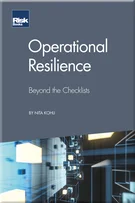
If you are a Risk.net subscriber you are entitled to 20% off your Risk books purchases. Please email enquiries@riskbooks.com for more information.
As part of your Risk.net subscription you are entitled to 20% off all of your Risk Books purchases. If you would like to place an order please email enquiries@riskbooks.com
The CECL Handbook: A Practitioner’s Guide
Discipline: Regulation
First published:
The Current Expected Credit Losses (CECL) model implementation requirement arguably represents one of the most influential changes to accounting standards that financial institutions have ever seen. The new standard may upend many business areas within an organisation, affecting loan origination, commercial policies, and portfolio strategy and management, to name but a few.
Financial institutions have to implement the CECL accounting standard by January 1, 2023. The CECL Handbook: A Practitioner’s Guide is the reference book for 2023 adopters, and a great training manual for staff within banks that have already adopted.
The team of editors – comprising several senior directors from Moody’s Analytics: Masha Muzyka; Laurent Birade; Yashan Wang; and former head of research Jing Zhang – have brought together a unique group of experts experienced in preparing and implementing the new CECL model.
Contents
Introduction
An overview of CECL: setting the context
Outlining the most impactful assumptions and challenges under CECL: an auditor’s view
Outlining the most impactful assumptions and challenges under CECL: a banker’s view
A banking industry perspective on key CECL decisions
Challenges and solutions for wholesale portfolios
Challenges and solutions for retail mortgage portfolios
Challenges and solutions for retail credit card portfolios
Challenges and solutions for student loans
Challenges and solutions for securities portfolios
The evolution of purchased loan accounting: from FAS 91 to the CECL transition
Challenges and solutions for qualitative allowance
Challenges and solutions: an auditor’s point of view
Early view of CECL integration into stress testing: practical approaches
Too many cooks in the kitchen: mastering the art of managing CECL volatility
Beyond CECL: rethinking bank transformation
Data collision: efficient lending under CECL
Cutting through the hype: how CECL is impacting investor views of procyclicality, credit analysis and M&A
Concentration risk: the CECL magnifying glass
Closing thoughts





